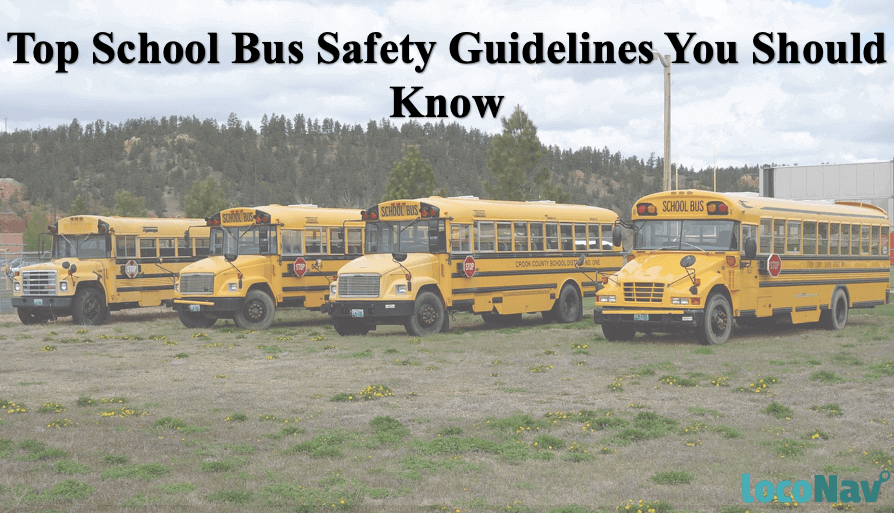

The most common mode of transportation used by students across the country is the bus. Specifically, school students and their parents rely on school buses to ferry the children to and from their homes. For the school administration and the parents, safety and security of their children is paramount. Hence, when it comes to transportation, it is important that vigilant steps are taken to ensure that the children are being commuted in the safest and most efficient way possible. This is where school bus safety guidelines come into play.
India has a wide network when it comes to school buses. The Indian government, as a result, has laid down specific rules and orders for school transportation. For instance, it decrees that a school bus driver must not work for more than 8 hours a day, with a half an hour break after a 5 hour mark. This rule comes as a means to ensure that the driver is not tired, and is able to stay alert to avoid any accidents on the road.
Along with that, educational institutions themselves follow a set of conduct so that road transportation is safe for all passengers on board the bus, and other vehicles plying on the road. In this article, we tell you top school bus safety guidelines you must know, whether you are a parent, a student, or a member of any school administration.
School Bus Safety Guidelines to Follow
- School buses must display the carrying capacity
Overcrowding a bus can lead to many mishaps on the road. To counter this issue, one guideline dictates that school buses should show their carrying capacity, written both on the inside and on the outside of the vehicle. This makes it easy for the traffic authorities to conveniently see if any school bus is violating the code, and to penalize them accordingly.
- School buses must be distinctly coloured yellow
As per school bus safety rules, all school buses must be painted yellow in colour. Moreover, the words ‘School Bus’ must be clearly written on the front of the bus, as well as on the back. Along with that, it must properly display the name and address of the school the fleet belongs to. In the event some school is using a different hired bus, then it is important that the bus should have the sign ‘On School Duty’ clearly displayed.
The other mandatory details that should be on display include name, address and license number of the driver, transportation department’s helpline number and the bus’s registration number.
Manage your school bus fleet efficiently with LocoNav’s Fleet Management Solutions!
- They must be equipped with safety measures
In the unfortunate event of an accident, school authorities must ensure that proper safety measures and kits are available readily on board the bus. The school bus safety guidelines direct that all school buses should have a first aid box, and fire extinguishers in working condition, the viability of which is to be checked routinely. Along with that, the staff on board, including the driver, the conductor and the attendant, must be properly trained to handle and use the equipment if required.
- The bus must have security features
To ensure proper safety of the pupils, the rules state that all school buses must be fitted with school bus tracking systems with GPS, as well as CCTV cameras. This ensures that the entire journey of the children from the school to their homes is accounted for, and the movement of the bus can be actively tracked and monitored.
Also read: Your Child’s Safety on Your Mind? Read This.
Also read: 5 Reasons Why You Should Invest in a Driver Management System
- School bus drivers must be verified
It is important that the management responsible for the school bus fleet does a thorough check on the drivers that they want to employ. The school bus driver must possess a valid driving license for a period of at least 4 years, and should have a minimum of 5 years of experience in driving a bus, or any other omnibus transport vehicle that is being used by the school. Moreover, the school bus drivers should follow the dress code involving a light blue shirt, with light blue trousers and black shoes.
- All school buses must follow the speed limit
A school bus that is being driven in a harsh and uncontrolled manner can pose a threat to all passengers on board, as well as other vehicles on the road. Therefore, school buses must adhere to a speed limit of 40 km/hr at all times. The driver should be trained in such a manner so as to not over speed, or wrongfully overtake other heavy vehicles on the road. In case the passengers on the bus feel unsafe, they should have the provision of emergency buttons to call for help and alert the concerned authorities immediately. This is one of the most important school bus safety guidelines that needs to be followed.
- School buses should have a list of school children on board
Since school buses have designated routes assigned to them, the conductor on board must have all details of the children that are to be ferried on the bus. The details include names of the students, their class, home address and address of pickup and drop off points. In addition to that, the details of the emergency contact of each child must also be present with the conductor or the attendant.
Quick read: 4 Tricks To Modernise Your School Bus System
Quick read: 4 Ways To Avoid Reckless Driving For Your Fleet